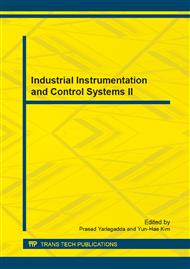p.1322
p.1331
p.1336
p.1340
p.1344
p.1349
p.1356
p.1361
p.1366
Intelligent Tool for the Design of Electrical Connectors
Abstract:
The paper describes an intelligent system for the automatic generation of electrical connector designs. A framework for the system is proposed based on the case-based reasoning approach. The work aims to improve the productivity through automatic exploration of the electronic CAD drawings and reuse successful past solutions for the generation of new conceptual designs. Although this paper focuses on the connector designs, the fundamentals could be applicable to other products that contain distinct sub-components confined within a fixed topology.
Info:
Periodical:
Pages:
1344-1348
Citation:
Online since:
July 2013
Authors:
Price:
Сopyright:
© 2013 Trans Tech Publications Ltd. All Rights Reserved
Share:
Citation:


